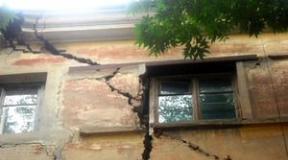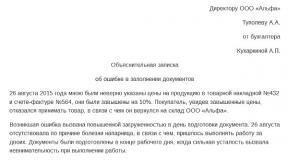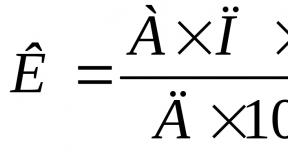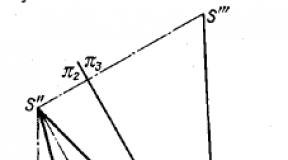Average salary per year
By the May 2012 decree of the President of Russia V.V. Putin, it was instructed at all levels of the budget to increase the salaries of employees of the public sector and the state apparatus. Accordingly, the level of the average salary in Russia also increases. What will be the average salary in 2015 in Russia and how much will this figure increase? We invite you to familiarize yourself.
The Ministry of Development of the Russian Economy predicts a high increase in the level of average monthly income (in terms of wages) among the population of the country. Today, this figure fluctuates at the level of 30 thousand rubles.
It is predicted that the average salary in 2015 will be set within 75 thousand rubles. per month. It was this rather big figure that representatives of the Ministry of Finance announced in their forecast for the development of the economy. But this is also an average. According to the innovative scenario of development, according to the same forecast, by 2025 a Russian will be able to receive an average of 84 thousand rubles. And the forced scenario assumes that in ten years the average monthly salary of a Russian citizen will reach 120 thousand.
Specialists-experts of the Ministry of Economic Development associate such a solid (more than one hundred percent) increase with several significant reasons. First, the share of the working-age population will decrease significantly by 2025. Secondly, there will be a noticeable decrease in qualified, experienced specialists. These factors will influence the fact that employers will try to reduce labor costs by increasing labor productivity.

Wherein the average salary in 2015 in Russia will most of all depend on the increase in the income of state employees, who have been receiving salary increases in recent years, and this process will be completed only by 2018.
What will be the average salary in 2015 in Russia
The average salary in Russia is a very “indicative” coefficient of the Russian standard of living. Thus, the existing difference between the "poor" and "rich" in our country is quite large - almost 38% is wage inequality. According to the RIA rating, about 13% of the Russian population receives less than 9 thousand rubles a month. And about 5% have salaries almost an order of magnitude higher - from 75 thousand rubles.
The average salary in 2015 in Russia is calculated separately from the same indicator in Moscow. So, for the next year in the capital of the state, the average salary income is projected at the level of 60 thousand rubles.
According to experts from the Moscow Government, the growth of wages in the capital is 1.8 times more stable than in the whole country. At the same time, the differentiation of Moscow salaries is very high. Almost 10% of the population of Moscow had a monthly salary income of more than 150 thousand rubles a couple of years ago. And about 5% of Moscow residents are on the verge of poverty, having incomes below the subsistence level. It is expected that in 2015 the monthly per capita income in Moscow should be set at a level 4.8 times higher than the subsistence level.
Rosstat preliminary calculated salaries for all organizations in Russia in 2015. It turned out that the average nominal monthly wage increased by 30% and amounted to 33,981 rubles (the highest salary was recorded in December - 43,408 rubles). At the same time, real wages decreased by 10% compared to 2014.
The region of the highest salaries was the Far Eastern Federal District - there the average salary in 2015 was 42,877 rubles. In second place is the Central Federal District - 41,848 rubles, in third - the Urals Federal District with a salary of 39,257 rubles.
| Region | 2013 | 2014 | 2015 *) | Increase 2015 to 2014, % |
| Russian Federation | 29’792 | 32’495 | 33’981 | 5% |
| Central Federal District | 36’213 | 39’945 | 41’848 | 5% |
| Northwestern Federal District | 32’549 | 35’468 | 37’616 | 6% |
| Southern Federal District | 22’497 | 24’311 | 25’279 | 4% |
| North Caucasian Federal District | 19’359 | 20’930 | 21’765 | 4% |
| Volga Federal District | 22’481 | 24’601 | 25’717 | 5% |
| Ural federal district | 34’735 | 37’270 | 39’257 | 5% |
| Siberian Federal District | 26’398 | 28’347 | 29’610 | 4% |
| Far Eastern Federal District | 37’579 | 40’876 | 42’877 | 5% |
| Crimean Federal District | 22’768 | n/a |
At the same time, the maximum wage was fixed in Chukotka (78,893 rubles), then in Yugra (77,519 rubles) and the Nenets Autonomous Okrug (70,984 rubles). Moscow salaries average only 64,324 rubles.
If, on the basis of the monthly data of Rosstat, we make the arithmetic average of the annual value by sectors of the economy, then we will see that the highest paid area is financial activity (average monthly nominal salary - 69'463 rubles), in second place - mining, in third - fishing ( 63'730 and 46'337 rubles, respectively).
| Industry | Average nominal salary, rub |
| Total for the Russian economy in 2015 | 34’012 |
| Financial activities | 69’463 |
| Mining | 63’730 |
| Fishing, fish farming | 46’337 |
| State administration and ensuring military security; social insurance | 41’825 |
| Operations with real estate, rent and provision of services | 39’765 |
| Transport and communications | 38’795 |
| Production and distribution of electricity, gas and water | 36’884 |
| Manufacturing industries | 31’849 |
| Provision of other communal, social and personal services | 30’083 |
| Construction | 29’951 |
| Health and Social Service Delivery | 28’064 |
| Wholesale and retail trade; repair of motor vehicles, motorcycles, household and personal items | 27’566 |
| Education | 26’892 |
| Hotels and restaurants | 20’520 |
| Agriculture, hunting and forestry | 19’401 |
Of the above areas, it is important to note that within the extraction of minerals, those involved in the extraction of fuel and energy resources (71,551 rubles) have the highest salaries, within manufacturing industries - the production of coke and petroleum products (81,655 rubles). At the same time, their nominal wages increased by 7% and 8%, respectively, which is higher than the national average.
The average salary is a macroeconomic indicator that is calculated by determining the level of the average salary of a certain group of workers. As a rule, this indicator is necessary for the economic analysis of enterprises, industries and regions. The average salary in Russia is calculated taking into account the wage fund based on the results of work for the year. Methods for calculating this economic parameter are conditionally divided into the following categories:
- calculation of average earnings for making payments in connection with motherhood and in connection with temporary disability;
- calculation of this indicator for the payment of vacation, as well as compensation for unused vacation;
- calculation of average earnings for other cases that are provided for by the Labor Code of the Russian Federation.
The average salary is calculated based on the amount of salaries received and payments that are included in the wage fund for a specific billing period, and the number of days actually worked is also taken into account. From January 1, 2013, the average salary in Russia is calculated according to a new scheme. This indicator is calculated by dividing the total earnings of the employee for the last 2 years of his work by the number 730. The term "amount of earnings" implies the inclusion of all amounts from which insurance premiums, vacation and travel allowances were withheld, while payment of travel costs, daily allowances and maternity allowances in calculation is not taken.
Statistical data on the level of average earnings for 2018
The results of statistical polls on average earnings for the last year are not much better than last year. The highest average salary in Russia in 2018 was recorded in Chukotka (98.6 thousand rubles), Yamalo-Nenets (96.7 thousand rubles) autonomous districts, Magadan region (86.1 thousand rubles) and Moscow (83.6 thousand rubles). .). The Nenets Autonomous Okrug closes the top five (82.7 thousand rubles).
Unfortunately, the difference between the average earnings of the above regions and most other regions of the Russian Federation is increasing every year. Regions with a developed oil and gas industry are distinguished by good indicators. Average wages in Russia increased slightly compared to the previous year. At the same time, the ratio between the level of earnings in different areas remains unchanged.
According to statistics, in most other regions of our country the situation is critical. The lowest average salary in Russia in 2018 (26.9 thousand rubles) was noted in the North Caucasus Federal District. The figures are slightly better in the Southern (31.5 thousand rubles) and Privolzhsky (31.8 thousand rubles) federal districts.
The indicators are relatively stable in the regions of the Volga and Northwestern Federal Districts. Thus, in the Republic of Mordovia and the Saratov region, the level of average earnings in recent years has been around 25 thousand rubles, in the Penza region it fluctuates between 26-27 thousand rubles, and in the Kaliningrad region it is about 31 thousand rubles.
Rosstat data on the level of the average monthly salary by region for 2018 quarterly:
Central Federal District
| Subjects of the Russian Federation | The average salary in 2018 for the economy as a whole quarterly in rubles | |||
| 1 quarter | 2 quarter | 3 quarter | 4 quarter | |
| Countrywide | 40 608 | 44 435 | 41 850 | 46 832 |
| Central Federal District | 50 834 | 55 979 | 51 966 | 59 006 |
| Belgorod region | 29 615 | 31 535 | 31 645 | 33 521 |
| Bryansk region | 25 197 | 28 327 | 26 824 | 28 850 |
| Vladimir region | 28 549 | 31 470 | 31 503 | 33 693 |
| Voronezh region | 28 884 | 31 799 | 30 807 | 33 579 |
| Ivanovo region | 23 790 | 25 975 | 25 028 | 27 926 |
| Kaluga region | 35 324 | 37 730 | 36 845 | 40 948 |
| Kostroma region | 26 175 | 27 961 | 27 431 | 29 520 |
| Kursk region | 27 971 | 30 597 | 28 935 | 32 194 |
| Lipetsk region | 29 458 | 32 151 | 31 270 | 34 427 |
| Moscow region | 47 732 | 51 390 | 48 897 | 54 871 |
| Oryol Region | 25 009 | 27 506 | 26 567 | 29 010 |
| Ryazan Oblast | 29 560 | 33 063 | 31 298 | 33 851 |
| Smolensk region | 26 949 | 29 677 | 28 743 | 31 922 |
| Tambov Region | 24 338 | 27 037 | 25 704 | 28 738 |
| Tver region | 28 227 | 31 068 | 29 632 | 32 937 |
| Tula region | 32 390 | 34 557 | 33 601 | 36 196 |
| Yaroslavl region | 31 940 | 34 112 | 32 628 | 36 393 |
| Moscow city | 78 172 | 86 825 | 78 630 | 90 695 |
Northwestern Federal District
| Northwestern Federal District | 47 502 | 49 805 | 47 653 | 52 973 |
| Republic of Karelia | 36 382 | 39 698 | 37 129 | 42 371 |
| Komi Republic | 47 598 | 52 533 | 48 237 | 52 150 |
| Arhangelsk region | 44 967 | 50 243 | 45 920 | 50 926 |
| Nenets Autonomous Okrug | 77 742 | 89 826 | 79 504 | 83 777 |
| Arkhangelsk region without AO | 42 191 | 46 916 | 43 148 | 48 253 |
| Vologodskaya Oblast | 34 345 | 35 355 | 34 624 | 38 067 |
| Kaliningrad region | 30 149 | 32 462 | 31 812 | 35 394 |
| Leningrad region | 40 617 | 42 715 | 42 391 | 44 852 |
| Murmansk region | 53 768 | 60 182 | 54 036 | 62 466 |
| Novgorod region | 29 774 | 31 622 | 30 644 | 33 043 |
| Pskov region | 24 771 | 26 890 | 26 250 | 29 540 |
| St. Petersburg | 58 783 | 59 795 | 57 678 | 64 642 |
| Southern Federal District | 29 388 | 32 017 | 30 934 | 33 790 |
| Republic of Adygea | 25 012 | 27 567 | 26 281 | 28 365 |
| Republic of Kalmykia | 24 112 | 27 158 | 24 773 | 28 397 |
| Republic of Crimea | 27 235 | 30 453 | 28 120 | 30 950 |
| Krasnodar region | 31 367 | 33 992 | 33 288 | 35 792 |
| Astrakhan region | 30 548 | 34 843 | 32 964 | 36 365 |
| Volgograd region | 28 786 | 30 872 | 29 442 | 32 422 |
| Rostov region | 28 411 | 30 815 | 30 103 | 33 105 |
| Sevastopol | 28 566 | 30 519 | 29 981 | 35 129 |
North Caucasian
Volga
| Volga Federal District | 29 545 | 32 219 | 31 103 | 34 323 |
| Republic of Bashkortostan | 30 752 | 33 430 | 32 600 | 35 247 |
| Mari El Republic | 25 606 | 28 104 | 27 135 | 29 717 |
| The Republic of Mordovia | 24 832 | 26 577 | 26 855 | 28 701 |
| Republic of Tatarstan | 32 411 | 35 370 | 33 924 | 38 633 |
| Udmurt republic | 29 251 | 32 812 | 31 258 | 33 321 |
| Chuvash Republic | 24 918 | 27 332 | 26 576 | 29 264 |
| Perm region | 33 081 | 36 149 | 34 097 | 38 910 |
| Kirov region | 25 681 | 28 057 | 27 223 | 29 469 |
| Nizhny Novgorod Region | 30 793 | 33 411 | 31 464 | 36 002 |
| Orenburg region | 28 518 | 30 959 | 30 110 | 32 458 |
| Penza region | 25 031 | 28 324 | 29 035 | 30 959 |
| Samara Region | 30 970 | 34 204 | 33 392 | 35 784 |
| Saratov region | 25 479 | 27 136 | 26 129 | 28 513 |
| Ulyanovsk region | 26 859 | 27 884 | 27 419 | 30 542 |
Ural
| Ural federal district | 44 459 | 49 620 | 45 921 | 50 002 |
| Kurgan region | 25 893 | 28 572 | 27 155 | 29 486 |
| Sverdlovsk region | 34 528 | 38 326 | 37 021 | 40 356 |
| Tyumen region | 64 874 | 73 348 | 65 187 | 70 793 |
| Khanty-Mansi Autonomous Okrug - Yugra | 67 204 | 74 179 | 68 081 | 74 357 |
| Yamalo-Nenets Autonomous Okrug | 92 106 | 109 644 | 89 397 | 95 572 |
| Tyumen region without AO | 41 670 | 46 315 | 43 384 | 47 767 |
| Chelyabinsk region | 33 263 | 35 460 | 33 973 | 37 443 |
Siberian
| Siberian Federal District | 34 911 | 38 436 | 35 974 | 40 657 |
| Altai Republic | 27 236 | 31 776 | 29 274 | 33 774 |
| The Republic of Buryatia | 32 961 | 37 978 | 33 972 | 40 333 |
| Tyva Republic | 31 803 | 37 319 | 31 385 | 41 830 |
| The Republic of Khakassia | 35 262 | 39 747 | 38 533 | 41 245 |
| Altai region | 23 258 | 25 442 | 25 507 | 27 922 |
| Zabaykalsky Krai | 36 148 | 40 015 | 37 834 | 44 976 |
| Krasnoyarsk region | 41 737 | 46 773 | 42 379 | 48 457 |
| Irkutsk region | 39 228 | 42 937 | 40 298 | 45 211 |
| Kemerovo region | 34 582 | 37 860 | 36 465 | 40 896 |
| Novosibirsk region | 33 589 | 35 684 | 33 703 | 38 175 |
| Omsk region | 31 541 | 34 032 | 31 859 | 34 893 |
| Tomsk region | 39 080 | 43 863 | 38 819 | 43 198 |
Far Eastern
| Far Eastern Federal District | 50 044 | 55 473 | 52 159 | 59 129 |
| The Republic of Sakha (Yakutia) | 61 962 | 71 278 | 60 958 | 75 642 |
| Kamchatka Krai | 64 713 | 76 927 | 71 566 | 78 645 |
| Primorsky Krai | 39 115 | 42 807 | 40 623 | 45 807 |
| Khabarovsk region | 43 527 | 47 812 | 46 362 | 50 077 |
| Amur region | 38 915 | 41 639 | 41 471 | 47 086 |
| Magadan Region | 77 148 | 87 718 | 80 860 | 98 719 |
| Sakhalin region | 71 925 | 75 001 | 73 852 | 79 707 |
| Jewish Autonomous Region | 36 255 | 39 074 | 37 885 | 42 842 |
| Chukotka Autonomous Okrug | 94 624 | 102 183 | 93 697 | 103 783 |
Average salary in the countries of the world in 2018
*According to PPP (an indicator that takes into account the difference in prices in different countries of the world).
| Place | Country | Salary per month, $ |
|---|---|---|
| 1 | Switzerland | 5 426.27 |
| 2 | Luxembourg | 3 565 |
| 3 | Qatar | 3 372.63 |
| 4 | Australia | 3 306.13 |
| 5 | UAE | 3 182.48 |
| 9 | USA | 2 835.07 |
| 10 | Hong Kong | 2 750.64 |
| 16 | Germany | 2 420.63 |
| 21 | Great Britain | 2 270.29 |
| 24 | France | 2 121.82 |
| 45 | Estonia | 909.38 |
| 46 | Czech | 908.43 |
| 48 | China | 888.29 |
| 51 | Greece | 862.39 |
| 58 | Poland | 766.58 |
| 62 | Turkey | 689.34 |
| 63 | Panama | 683.51 |
| 64 | Botswana | 680 |
| 65 | Latvia | 668.86 |
| 66 | Lithuania | 668.39 |
| 67 | Russia | 637.7 |
| 68 | Jordan | 619.35 |
| 69 | Uruguay | 613.12 |
| 70 | Namibia | 601.08 |
| 90 | Bosnia and Herzegovina | 453.65 |
| 99 | Kazakhstan | 360.75 |
Prospects for increasing average earnings in 2019
Average salaries in Russia, according to Rosstat, has slightly increased since the beginning of 2019 compared to the same period last year in 2018. Thus, in the first quarter of 2019, the average earnings in the country as a whole amounted to 43,883 rubles, which is 8% more than the figures published for the fourth quarter of 2018. The increase in wages is associated mainly with an increase in the minimum wage. You can read more detailed and up-to-date information in the section.
In the first months of this year, the professions of sellers, builders, carriers, production workers, representatives of the auto business became the most in demand. These areas cover approximately 66% of open vacancies.
Nothing has been clear about wages lately. It is clear that there is a crisis, it is clear that devaluation. But it is not clear whether salaries in rubles are growing at least while the ruble is falling? We studied the official data of Rosstat and independent sources. Today analytical magazine IQ Review will tell you how it changed in Russia in dollars and rubles in 2015.
To begin with, let's take the data of official state statistics on wages from the State Statistics Committee.
Minimum wage table since 2000
| Validity | Minimum wage |
|---|---|
| 01/07/2000-31/12/2000 | 132 rubles |
| 01/01/2001-30/06/2001 | 200 rubles |
| 01/07/2001-30/04/2002 | 300 rubles |
| 01/05/2002-30/09/2003 | 450 rubles |
| 01/10/2003-31/12/2004 | 600 rubles |
| 01/01/2005-31/08/2005 | 720 rubles |
| 01/09/2005-30/04/2006 | 800 rubles |
| 01/05/2006-01/09/2007 | 1 100 rubles |
| 01/09/2007-31/12/2008 | 2 300 rubles |
| 01/01/2009-31/05/2011 | 4 330 rubles |
| 01/06/2011-31/12/2012 | 4 611 rubles |
| 01/01/2013-31/12/2013 | 5 205 rubles |
| 01/01/2014-31/12/2014 | 5 554 rubles |
| from 01/01/2015 | 5 965 rubles |
Dynamics of the average salary in Russia by years over the past 15 years
| Year | |
|---|---|
| 2000 | 2223 |
| 2001 | 3240 |
| 2002 | 4360 |
| 2003 | 5499 |
| 2004 | 6740 |
| 2005 | 8555 |
| 2006 | 10634 |
| 2007 | 13593 |
| 2008 | 17290 |
| 2009 | 18638 |
| 2010 | 20952 |
| 2011 | 23369 |
| 2012 | 26629 |
| 2013 | 29792 |
| 2014 | 32611 |
| Year | Average salary according to Rosstat, in rubles |
|---|---|
| 2000 | 2223 |
| 2001 | 3240 |
| 2002 | 4360 |
| 2003 | 5499 |
| 2004 | 6740 |
| 2005 | 8555 |
| 2006 | 10634 |
| 2007 | 13593 |
| 2008 | 17290 |
| 2009 | 18638 |
| 2010 | 20952 |
| 2011 | 23369 |
| 2012 | 26629 |
| 2013 | 29792 |
| 2014 | 32611 |
Dynamics of the average salary in Russia for 2014-2015
- for the full year 2014 - 32,611 rubles per month. After paying personal income tax - 28400. The average annual dollar rate is 38 rubles.
Thus, in Russia the minimum wage rose by 7.4% over the year. The ruble across the country in 2015 fell by 4%, the dollar - by 32% (at the same time, it was even higher in 2013 due to the average annual dollar exchange rate).
Thus, in Russia for the year it rose by 7.4%. The ruble average salary in the country in 2015 fell by 4%, the dollar - by 32% (at the same time, it was even higher in 2013 due to the average annual dollar exchange rate).
And now it's time to know how did the income of Russians change after the devaluation of the ruble.
- The average salary in Russia for 2015 (the latest Rosstat data is available for February) is 31,325 rubles . This is before VAT. After taxes - 27,250 rubles. The average dollar exchange rate since the beginning of 2015 is 53 rubles.
- The average salary in Russia for the full year 2014 is 32,611 rubles per month. After paying personal income tax - 28400. The average annual dollar rate is 38 rubles.
Thus, in Russia the minimum wage rose by 7.4% over the year. The ruble average salary in the country in 2015 fell by 4%, the dollar - by 32% (at the same time, it was even higher in 2013 due to the average annual dollar exchange rate).
The average Russian in 2015 earns $614 per month (at today's rate before income tax is 13%, after deduction - $534).
What should be the average salary? (video)
If a person obliged to pay child support does not have official income, or does not want to provide the bailiff with data on such income, this does not mean that he will not have to pay. This also does not mean that the bailiff in such a situation will have difficulties in calculating the alimony arrears.
“.. The amount of debt on alimony paid for minor children in shares of the debtor's earnings is determined on the basis of the debtor's earnings and other income for the period during which the alimony was not collected. If the debtor did not work during this period or documents on his income for this period were not submitted, then the alimony debt is determined based on the average wage in the Russian Federation at the time of debt collection.
The moment of determining the debt on alimony
The moment of debt collection is determined by the moment the bailiff issues a decision on the calculation of alimony arrears.
For example, the obligation to pay alimony on the basis of a court decision arose in December 2014. However, the debtor did not fulfill this obligation. If the bailiff issues a ruling on the calculation of alimony arrears in May 2015, then one should proceed not from the average wage in the Russian Federation as of December 2014 (when the obligation to pay alimony arose) in the amount of 42,136 rubles, but the state of the average salary in the Russian Federation as of May 2015, that is, 34,380 rubles (see the numbers below). I note that in this particular example, it turned out that the average monthly salary in the Russian Federation in December 2014 was higher than in May 2015 (although traditionally, due to inflation, there is a reverse trend), however, this does not change the above principle of calculating debt on alimony.
On June 19, 2012, the Federal Bailiff Service of Russia No. 01-16 approved the "Methodological recommendations on the procedure for fulfilling the requirements of executive documents for the recovery of alimony" (hereinafter referred to as the Methodological Recommendations).
We do not withhold personal income tax from the average salary in the Russian Federation
When calculating the amount of alimony arrears based on the average wage in the Russian Federation, the personal income tax in the amount of 13% non-deductible, since the average wage in the Russian Federation, calculated by the Federal State Statistics Service, is not the real income of the debtor.
The bailiff makes the calculation of debts for alimony 1 time per quarter!
As part of the execution of enforcement proceedings for the recovery of alimony, the bailiff-executor must calculate the debt for alimony at least once a quarter and draw up an appropriate resolution.
In case of disagreement with the amount of debt for alimony determined by the bailiff, any of the parties whose interests are violated may appeal against the actions of the bailiff in the manner prescribed by applicable law.
Where does the bailiff get information about the average salary in the Russian Federation?
Methodological recommendations allow the bailiff-executor to obtain information about the average salary in the Russian Federation, including the data of the official website of the Federal State Statistics Service of the Russian Federation:
"Information on the average salary of the territorial bodies of the FSSP of Russia should be requested monthly from the bodies of the Federal State Statistics Service (Rosstat) and sent to structural units for use in their work. If necessary, up-to-date information can be obtained in information and legal systems or on the official website of Rosstat ".
Where can I see data from Rosstat of the Russian Federation on the average monthly wage?
On the website of the Federal State Statistics Service of the Russian Federation (http://www.gks.ru) you can see data on the average monthly nominal accrued wages of employees for a full range of organizations in the economy of the Russian Federation as a whole.
According to Rosstat, for example, in 2014, the average monthly nominal accrued wages of employees for a full range of organizations in the whole economy of the Russian Federation in 2014 amounted to 32,495 rubles.
At the same time, the average monthly salary of citizens, according to Rosstat, amounted to:
- January - 29535 rubles;
- February - 29255 rubles;
- March - 31486 rubles;
- April - 32947 rubles;
- May - 32272 rubles;
- June - 33726 rubles;
- July - 32515 rubles;
- August - 30763 rubles;
- September - 31929 rubles;
- October - 32439 rubles;
- November - 32546 rubles;
- December - 42136 rubles;
The average monthly salary of citizens in 2015, according to Rosstat (data published on the Rosstat website as of June 2015), was:
- January - 30929 rubles;
- February - 31325 rubles;
- March - 32642 rubles;
- April - 34377 rubles;
- May - 34380 rubles;
- June - 35395 rubles



















